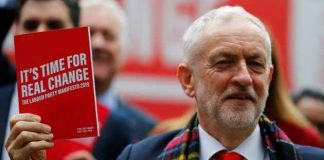APRIL 30, 2021

Household income rose at a record pace of 21.1% in March as federal-stimulus checks helped fuel an economic revival that is poised to endure with an easing pandemic.
The 21.1% March surge in income was the largest monthly increase for government records tracing back to 1959, largely reflecting $1,400 stimulus checks included in President Biden’s fiscal relief package signed into law in March. The stimulus payments accounted for $3.948 trillion of the overall seasonally adjusted $4.213 trillion rise in March personal income.
Spending was also up sharply, increasing 4.2%, the Commerce Department said on Friday. That was the steepest month-over-month increase since last summer.
Consumers shelled out more money on goods, particularly big-ticket items such as autos and furniture, compared with services in March. But economists expect that to change in the coming months due to widespread vaccinations and the broader reopening of the economy.
“If we have Covid-19 cases under control, that would ideally make way for us to reopen the services sector of the economy,” said Pooja Sriram, U.S. economist at Barclays. “That, in fact, is a crucial aspect of ensuring that this recovery continues.”
Americans will have cash to spend. The personal-saving rate surged to 27.6% in March, the second highest rate on record, eclipsed only by last April when a first round of government aid was distributed early in the pandemic.
Stimulus payments included in the latest package propelled spending the most of all three rounds of pandemic stimulus checks, according to data-analytics company Earnest Research.
People who received stimulus money drove up total spending growth by 29 percentage points in mid-March compared with the same period in 2019, Earnest transaction figures show. That outpaced bumps of 23 and 22 points after the first and second stimulus checks, respectively.
The spending effect was larger this time because the checks were bigger and aligned with economic reopenings, said Zach Amsel, data analytics director at Earnest. Spending among stimulus recipients grew twice as fast in Pennsylvania, Texas and Florida compared with California and New York, according to Earnest, reflecting stronger stimulus effects in states that reopened faster.
“Local economies matter,” Mr. Amsel said. “If in Texas and Florida, restrictions were never as strict as New York and California, you saw that play out since April of last year.”
Consumer spending is the biggest factor behind economic growth in the U.S. Spending has held up solidly throughout the pandemic, as consumers ramped up purchases of goods, such as cars, home appliances and furniture. Spending on in-person services—such as restaurants, nail salons and air travel—was hit hard, but is picking up as people get vaccinated. Consumers increased spending on services by 2.2% in March from a month earlier.
Robert Bornfriend, 76 years old, had taken about two international trips a year for much of the past decade. When the pandemic struck, the Wheaton, Ill., resident hunkered down at home for months, avoiding travel and dining out.
This year is shaping up to be different. Mr. Bornfriend, who is now fully vaccinated, recently ventured out to a restaurant for the first time during the pandemic to eat a trio of shrimp, skirt-steak and lamb tacos.
He also flew to Costa Rica in April and is looking forward to a group tour of Sicily later this year. When he booked a river cruise through Holland and Belgium, Mr. Bornfriend opted for a treat: a cabin on the first-level deck.
“I’m willing to splurge a little bit more to maybe visit more places or upgrade my accommodations so I enjoy it more,” he said. “I feel like I lost a significant percentage of my remaining lifespan, and I want to make it up.”
As the economy reopens in the coming months, households will be primed to spend more of the savings they built up during the pandemic. Personal saving amounted to about $6 trillion in March, up by nearly $5 trillion from February 2020, the month before the pandemic shut down large parts of the economy.
Wealthier households, which suffered fewer job losses during the pandemic, have run up the bulk of savings during the pandemic. Though they are more likely than lower-income households to treat the savings as wealth, instead of income to spend, many economists expect they will still spend lavishly this year to compensate for months of staying at home.
Strong consumer spending is one factor that will likely push up inflation in the near term. Surging demand is showing signs of outpacing companies’ ability to hire, which could force them to increase wages and prices.
Pay for U.S. workers picked up in the first quarter of the year. The employment cost index showed wage and salary costs rose 1% from the prior quarter, the strongest quarterly increase since a 1% gain in 2007, according to a Labor Department report released Friday. Private wages and salaries were up 3% in the first quarter from a year earlier. That is a return to the same rate of growth recorded before the pandemic and evidence of a moderately tight job market, even though employment is still down 8.4 million from its pre-pandemic peak.
Inflation also increased. The personal-consumption expenditures index excluding food and energy, the Federal Reserve’s preferred inflation gauge, rose 1.8% in March from a year earlier. In February, this price index increased 1.4% from a year earlier.
Price pressures that emerge from the reopening process are likely to be temporary, Fed Chairman Jerome Powell said at a press conference Wednesday.
“An episode of one-time price increases as the economy reopens is not the same thing as, and is not likely to lead to, persistently higher year-over-year inflation into the future,” Mr. Powell said. “Indeed, it is the Fed’s job to make sure that that does not happen.”
Courtesy/Source: WSJ

































































































